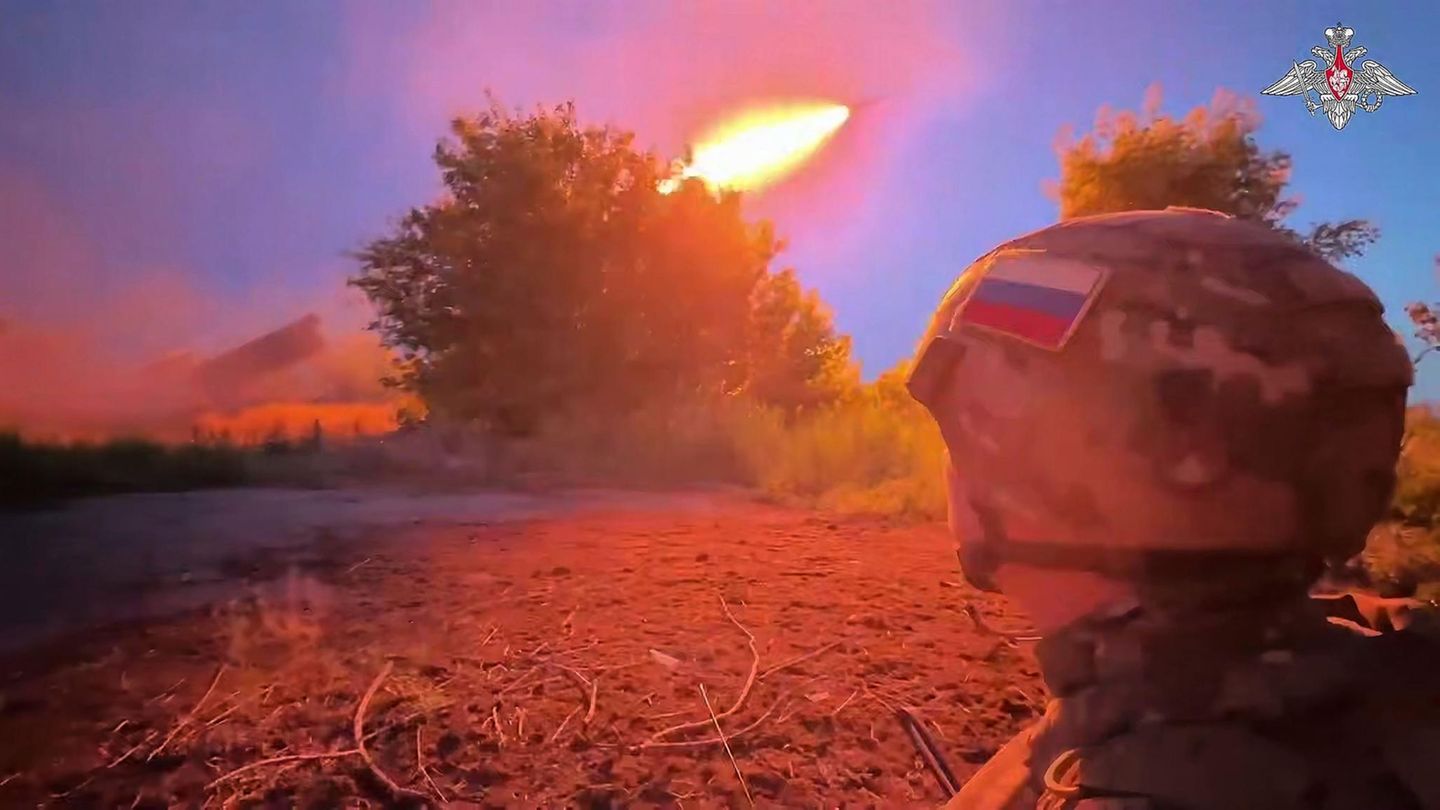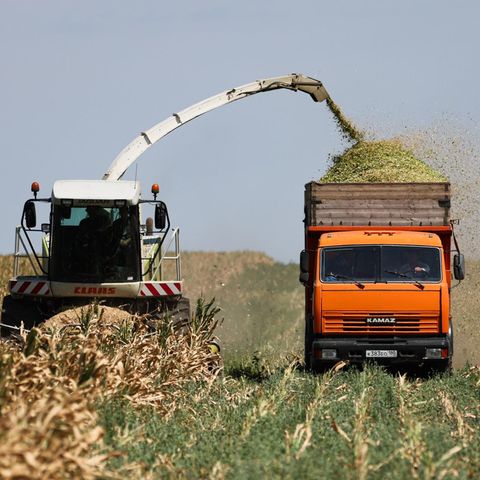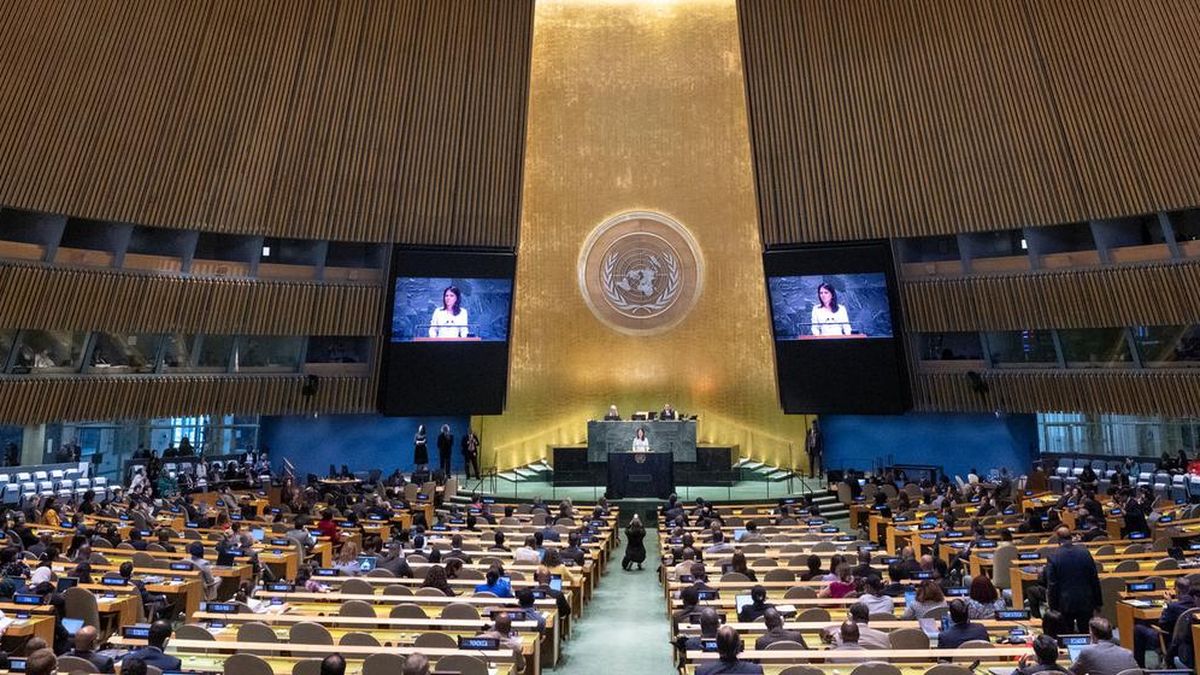War against Ukraine
Donbas under pressure, Putin’s troops push almost 20 kilometers
Copy the current link
Add to the memorial list
The Army of Vladimir Putin breaks Ukrainian lines near Pokrovsk. Kiev’s elite units are supposed to stop the advance, otherwise the entire Donbas front is in danger.
In front of the Alaskag summit, the Russian invasion troops do everything possible to make as much progress as possible. President Vladimir Putin’s calculation: If his army continues to accelerate her advance, Donald Trump will strengthen the already existing impression that Kiev cannot win this war and that every further month without an armistice continues to weaken the position of Ukraine.
Donbas is Putin’s most important goal
The central region is the Donbas. In the east of the country, the Ukrainian armed forces continue to hold cities in the Donetsk region. A zone from which you have to withdraw to Putin if he is supposed to agree with an armistice. The situation there has been critical there for months. In some places, the Ukrainians managed to stop the Russians, with the result that they pushed the defenders back in other places.
So far, the fighting has been in a slow pace. There was a tough struggle for individual rows of trees, a village fell, the Russians generally failed to move in, as the next settlement was defended again.
But for a few days now, the Kremlin troops north of Vscope have penetrated almost 20 kilometers deep into the Ukrainian positions. At Novovodyane, they are said to have exceeded the T-O514. This would physically cut this important connecting road between the Vscope and Kramatorsk.
The Russian slump north of Vscope concentrates on the hill chain west of Novovodyane, which offers an increased position and facilitates control over the connection street T-O514. From there, the Russians could try to expand their positions towards the city of Kramatorsk. At the same time, they would have pierced the next line of defense of the Ukrainians.
In addition to this advance north, your soldiers are said to have already reached Dobropillja, which is further east. There are hardly any videos with unpregnable geodata for the fights, the reports are based solely on news from the front – but often from the Ukrainian side.
Tactics of the seeping
When it comes to their rise, it shows how the Russians have changed their tactics since the beginning of the war. The attack was not carried out by strong armored forces, but by small command groups. The individual storm group continues to divided – into about two to three men.
The Russian command groups not only use motorcycles, but also light off -road vehicles to quickly put supplies such as ammunition and fuel into the open positions. This enables you to keep isolated positions in the Ukrainian hinterland longer.
So you often penetrate the Ukrainian lines that are only fertilized with motorcycles. Your goal is to slip through as unnoticed as possible and then to commit yourself in the hinterland.
First advance without any noteworthy resistance
Videos often appear in which these groups are discovered and then attacked by drones. This creates the impression of suicide missions – but there are no clips of the successful infiltrations, and these have been piling up recently.
One reason should be that the Russians hunt for the drone operators of the Ukrainians. Systematically, Russian drones and sliding bombs destroy possible hiding places behind the front. At the same time, the Russian soldiers move under the protection of their own drones. The quick pace of the current advance indicates that they at least partially encounter resistance.
It is reasonable to assume that the few Ukrainians avoid fighting in their resistance nests. A struggle in which the Russian command groups could be stopped, but the Ukrainians were at risk that their positions would be attacked by drones or completely destroyed by sliding bombs.
Azov-Corps should stop Russians
Kyiv has now sent its elite troops to the region. According to their own statements, parts of the AZOV corps have already arrived in the area of the connecting road T-O514. In addition to the Azov Corps, Ukraine moved other elite fighters such as the 3rd storm brigade to the area. But even these units willing to fight are not rested and fully filled, but suffer from the previous fights. They are also pulled out of the front in other places.
Kiev did not succeed in cleaning the slump in the small Russian command groups with counterattacks of regional forces. This grew the cheapest time for a counterattack. In the meantime, the Russians have led regular troops to the burglary. They dug up, adopted Ukrainian fortifications and, above all, set up their own drone units.
A counterattack would now have to be directed against a prepared enemy. Presumably, the forces who are brought up will be able to do little more than to remove the Russian slump north. They will still have to fight with the problem that Russian command groups could appear in their backs.
The Ukrainians hold the villages around Pankiwka to the east of the break -in. There, the Ukrainian armed forces have set up reinforced trenches and artillery positions to ward off possible Russian attacks from the east.
These positions also serve as a starting point for limited counterattacks to put pressure on the Russian flanks. From there you could try to cut off the Russian tip. Conversely: If the Russians want to further enlarge their break -in, they have to widen the root of the pluck and drive the Ukrainians out of these places.
Russians have to be stopped
The situation is extremely threatening. At all costs, Kyiv has to prevent the opponent from penetrating further north. If the Russians in the country behind the front could move forward freely, the entire Donbas front would be in danger in the long term of being cut off.
Moscow enlarges the compulsion to stop the Russians there. If Putin’s troops are stopped in the most promising direction, they could expand their slump in west and possibly attack from another front lead. The limited powers of Kiev would then have to be divided further.
No return of the lightning war
A real lightning war is not to be expected. The Russians will not be able to cut off the chain of the fortified cities from Kostjantyniwka via Kramatorsk to Slowjansk from the hinterland in a few weeks. They lack the troops, and such a bold maneuver of a war of movement are hardly conceivable under the conditions of the fights in Ukraine. However, you will try to fight for positions from which this average will be possible next year.
The next few days will decide on the further fate of Free Ukraine. Ideally, it is possible to cut off the Russian front nose and boil the Russians there. That would be a severe defeat of the invaders. But this outcome is not very likely.
Putin’s victory would look like this: Kiev does not manage to contain the Russian slump permanently. The Ukrainians are beaten in this attempt and then the Russians move further. The most likely variant should be that Kiev can banish the immediate danger to the entire Donbasfront, but the Russians manage to further widen their slump and close smaller boilers along the front in the east.
Source: Stern
I have been working in the news industry for over 6 years, first as a reporter and now as an editor. I have covered politics extensively, and my work has appeared in major newspapers and online news outlets around the world. In addition to my writing, I also contribute regularly to 24 Hours World.





